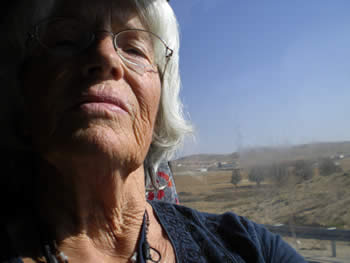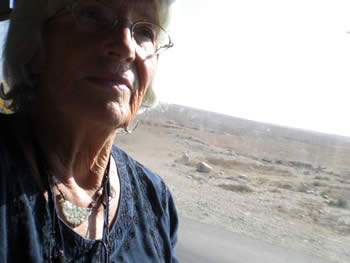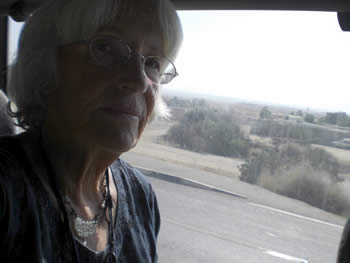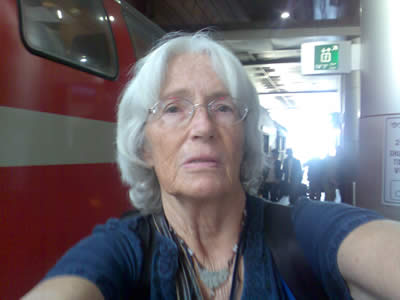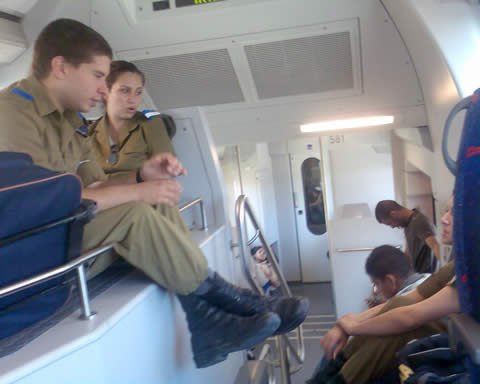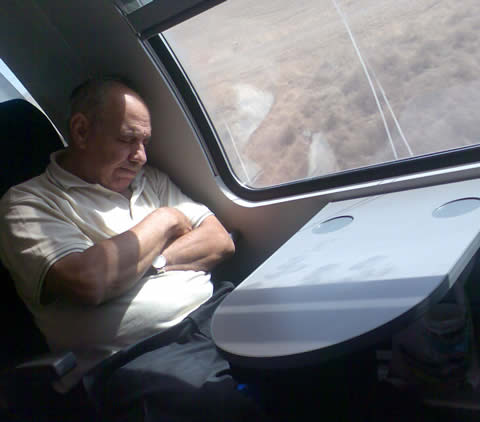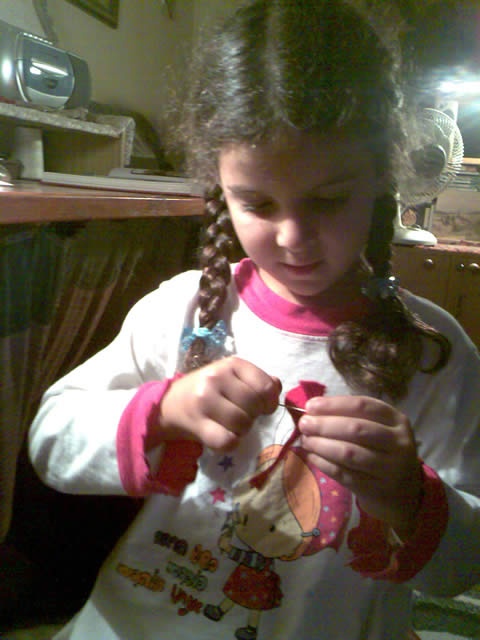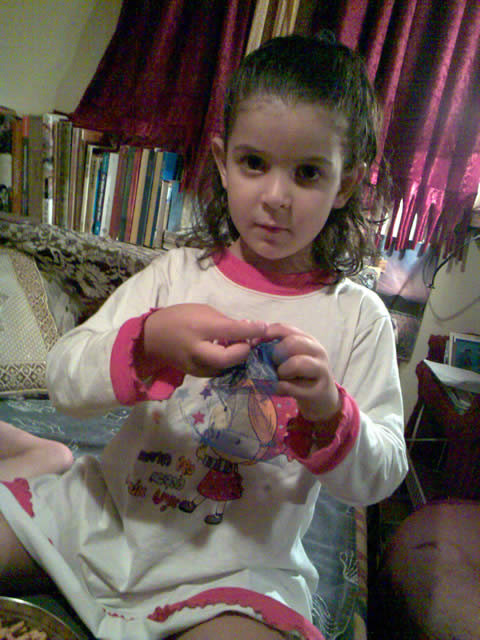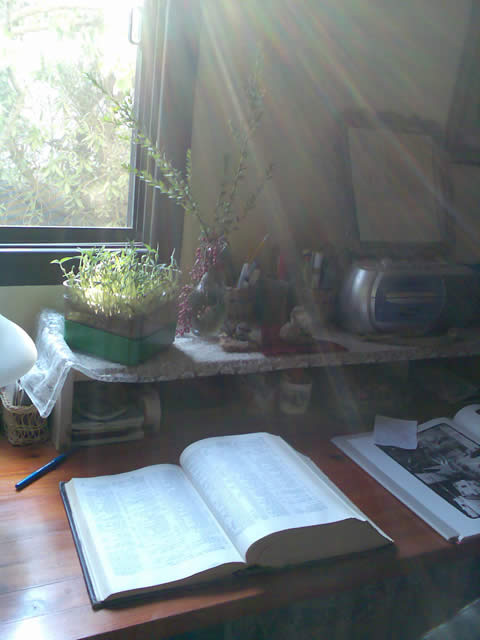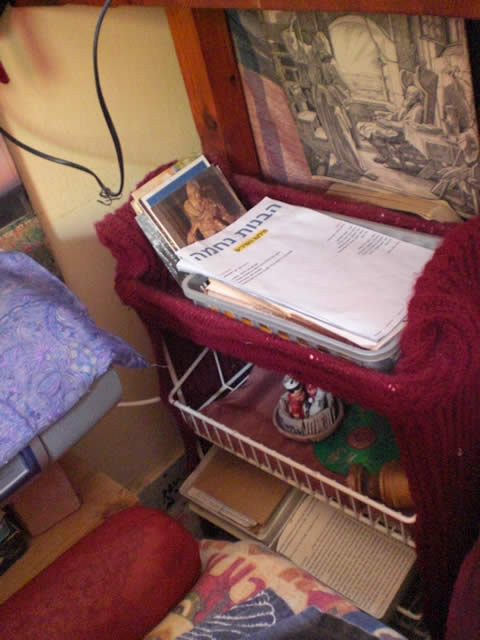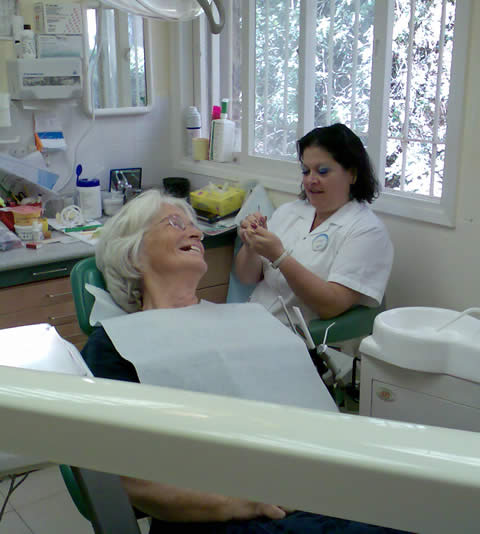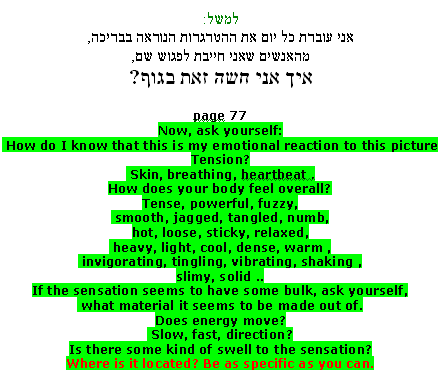|
Back to Overview of all sculptures in the fourfold library of "InteGRATion into GRATeFULLness"
![]()
InteGRATion into
GRATeFULLness
Nourishment from Others
2007_10_30
Waking the Tiger - Healing Trauma 1995
The Innate Capacity to transform Overwhelming Experience
Second Page |
A very concrete example of the "Felt Sense" see at the end of this page.
My present cell-phone music album, contains music of very different genres. I listen when walking to the pool or traveling to Shoham (unless I want to learn a loved, but a bit forgotten song, inserted in my Song-game, and - until it will be learnt - recorded on the phone) |
HaBanot Nechama "The Consolation Girls", three women who sing striking songs, both in Hebrew and in English. The idea was Ra'ayah's idea for my birthday |
Flowers: Flowers in my bed and in my head and in my
hair |
|
Chapter
6: In Trauma's Reflection Medusa 65 If we attempt to confront trauma head on, it will continue to do what it has already done – immobilize us in fear. Before Perseus set out to conquer Medusa, he was warned by Athena not to look directly at the Gorgon. Heeding the goddess's wisdom, he used his shield to reflect Medusa's image; by doing so, he was able to cut off her head. The solution to vanquishing trauma comes not through confronting it directly, but by working with its reflection, mirrored in our instinctual responses. 66 |
Traveling to Shoham, In
the bus to Beer-sheva, October 17
|
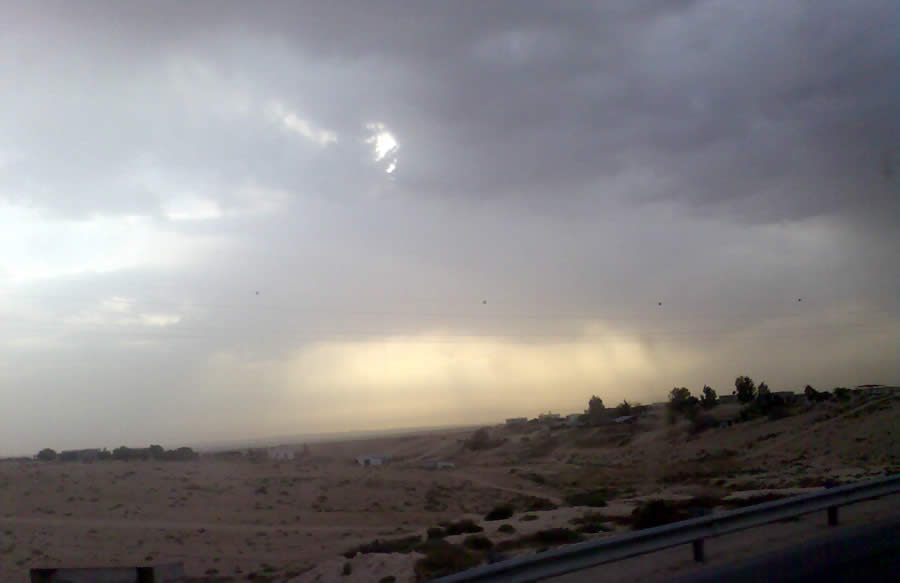
An unusual grey sky above the Bedouin compounds,
lightenings on the horizon and even some gentle rain - the first this year!
|
[While studying this on 2006_10_13, According to Eugene
Gendlin,
Exercise (understanding of the felt sense). Feel the way 69 Perhaps the best way to describe the felt sense
is to say Once the setting has been interpreted and defined by
the felt sense, Emotions contribute to the felt sense,
I return home from a busy day of errands in town
|
Still in the bus to Beersheva,
More landscape photos taken from
bus and later from the train,
On my next journey, October 23-26, I took shots on my way back
Waiting for the train at the train-station
of Ben-Gurion Airport,
And these are the people I watched
with a smile,
I had no idea, that by the end
of the month |
|
72 Let the Body Speak Its Mind It is from the felt sense that we experience well-being, peace, and connectedness. It is how we experience the "self"! 73 It is important to remember that the felt sense is a wonderful and very natural human capacity. Part of the dynamic of trauma is that it cuts us off from our internal experience as a way of protecting our organisms from sensations and emotions that could be overwhelming.
Now, ask yourself: 78 |
It was the first time - on October
8 - that little Lior came to me
October
2, Exploring "ke-gan ravae" ,"like a water-satiated
garden",
|

On Oct. 28, 2007, I was enchanted
by the corner outside of my veranda, where old palmfronds meet with geranium
plants- (a long story)
and with my climbing "miracle-shrub" with its grape-like flowers
and fruits (another story...).
In between my "work" of learning and creating on my computer I ever
so often skip into "my" garden,
tending each plant, that overcomes the difficulty of what I call the "anti-soil",
with love and admiration.
My game is to never buy anything for this tiny piece of our planet, neither
plants, nor fertilizer, nor pots.
Like most of my "daily bread" - pots, discarded by others, and shoots
of plants can always be found,
and to tend and grow the compost, started in the first year by Gal, one
of my "Star-children", is exciting.
Ofir Cohen, my landlord provides the water, and he even waters my garden,
when I'm away at Shoham.
81 Sensation and the Felt Sense 82 You can miss some characteristics of a sensation because you take them for granted, because you aren't letting the whole sensation into your awareness, or because the characteristic in question is subtle or elusive. An ice cube straight from the freezer can be sticky, as well as cold, hard, smooth, and cube-shaped. After a short while, it will be wet instead of sticky. First sticky, then wet helps complete the picture of the cold, hard, smooth, cube-shaped thing. Apply the analogy to an internal experience and, like the ice cube, it will change as you hold it for a while. Once you become aware of them, internal sensations almost always transform into something else. [May 2010: This reminds me of the "Concentrative Movement Therapy" which I experienced - in the early eighties - with Mirjam Goldberg - a pupil of Elsa Gindler: "the grandmother of somatic psychotherapy" or "ancestor of sensory awareness" - see a good article ] Any change of this sort is usually moving in the direction of a free-flow of energy and vitality. |
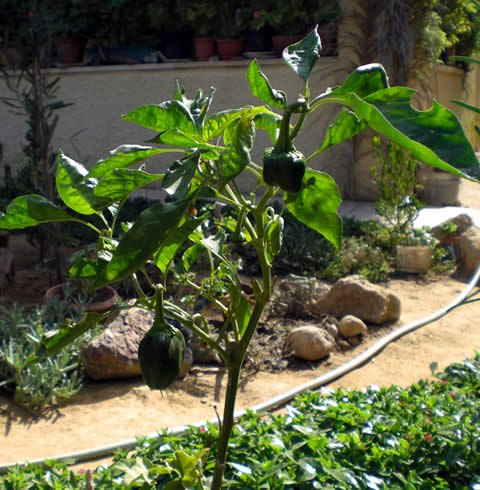 This green paprika plant grew by itself in a pot last year. After it had given me the gift of some fruits, I left it in the pot. Suddenly it blossomed again 2 months ago and 2 fruits are growing. |
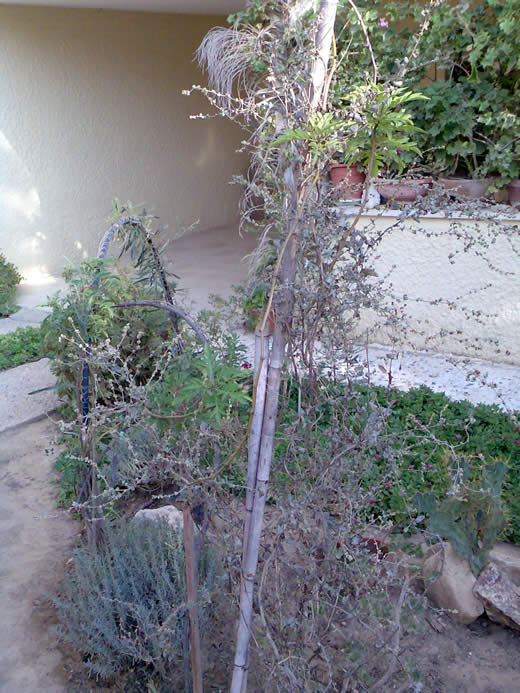 |
These
images of my little garden are not impressive, perhaps, but for me they present miracles. How the two shrubs, which I have NOT planted, are intertwined! 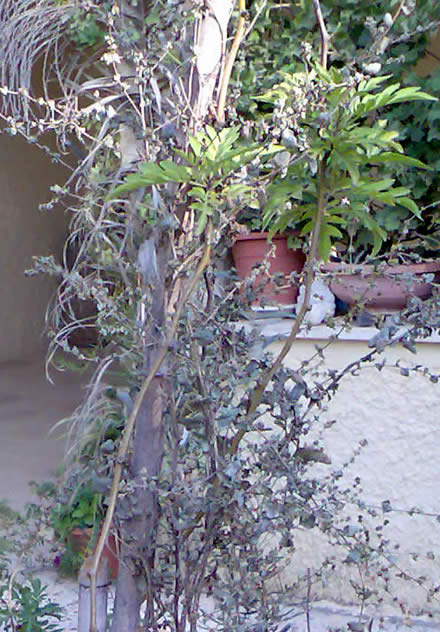
|
|
You can't push the river
Sensations occur in infinite
variety. 83 The felt sense is billions of times more sophisticated
|
As to the other interesting "things"
to be seen above those cuttings , |
128 Most common signs of arousal: * physical – increase in heart rate, difficulty breathing (rapid, shallow, panting, etc.) cold sweats, tingling muscular tension * mental – increase in thoughts, mind racing, worrying If we allow ourselves
|
October
28, 2007 - May 29,
2010
|
|
2010-06-10--- 2013_08-02  DELICIOUS
DELETION DELICIOUS
DELETION |

In the dental clinic on November 25, 2007 - this
is Israel - Bedouin women or couples received by J ewish women, a Russian
immigrant between Eti and Nurit
|
188 In the Theater of the Body …the internal world of dreams, feelings, images, and sensations [why not thoughts also?] - most of us are only peripherally aware of its existence. We have little or no experience of finding our way around in this internal landscape. Consequently, when our experience we are unprepared. .. so that we access the infinite feeling tones and behavioral responses that we are capable of executing. Once we understand how trauma begins and develops, we must then learn to know ourselves through the felt sense. … Our bodies will tell us where the blockages are and when we are moving too fast. Our intellects can tell us how to regulate the experience so that we are not overwhelmed. … Moving slowly and allowing the experience to unfold as each step allows us to digest the unassimilated aspects of the traumatic experience at a rate that we are able to tolerate. In the theater of the body, trauma can be transformed. The fragmented elements that perpetuate traumatic emotion and behavior can be completed, integrated, and made whole again. Along with this wholeness comes a sense of mastery and resolution. [2006_10_18]
|
As mentioned before, Helpful: |

Unlike in former times, I'm now rarely going out
into the desert, since I
pass the desert 4 times every day,
going to the pool twice forth and back.
But after I came back from Shoham on Friday, Oct. 26, - having managed to
enter the pool in the last minute,
I felt too tired to do "serious" work, and seeing the full moon
on Shabbat Eve, I decided to "go out".
Ever since that memorable
full moon night with the quartet I hadn't been to that spot,
from where both can be seen
- the Dead Sea and the lights on its eastern shore and in the Jordanian mountains.
I tried my camera with a tripod, which Immanuel had brought me from Hongkong,
and after some editing (also something technical that has to be learnt!) I
am pleased,
that the images truly convey the mystical atmosphere of water and light in
the dark...

The last pages of "Waking the Tiger" , Healing
Trauma
[re-read and copied on June 10, 2010]
|
|
256-259 p. 189 IN the theater
of the Body , trauma, can be transformed. |
I want to close these
two creations - "Focusing" and "Healing Trauma"
with two images, which sort of summarize the visual
compositions on these pages:
On Oct. 6, Micha (see "Focusing")
sent me a satelite image of "Succah
in the Desert",
commenting: "It's nice to see the path I
made to the water tank with my own hands
(in 1990) so clearly (see
the green mark)
On Oct. 10 , I felt swept away by this "Breaking
Wave", an image of "Webshot",
the slideshow of my computer's screen-saver...
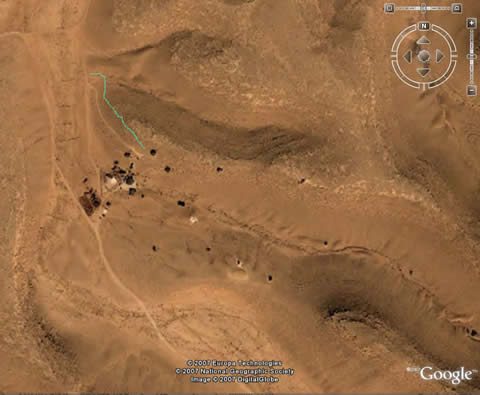 |
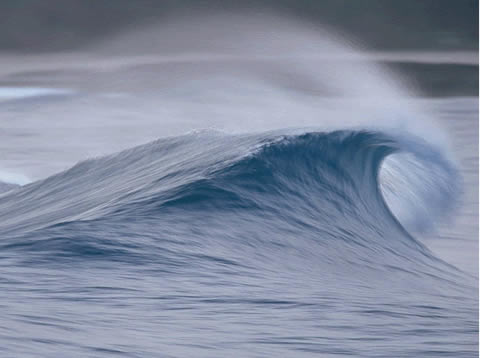 |
December 15, 2007,
I want to quote once again, what on Dec. 15, 2006, was most important for
me, a very concrete example of the Felt Sense
I still haven't internalized it enough, see the
song of Dec.13, 2007
|
page 72 I return home from a busy day of
errands in town and reach for the TV remote.
|
page 84 |
Second Page |
to
former source of "Nourishment from Others"  to next
source of "Nourishment from Others"
to next
source of "Nourishment from Others"


